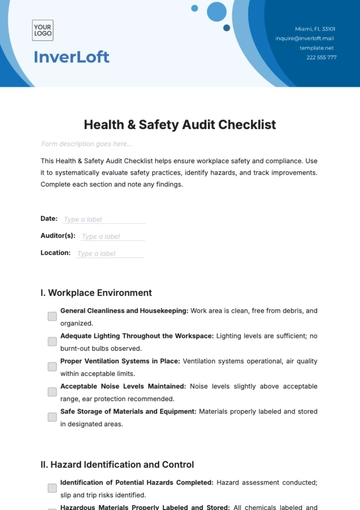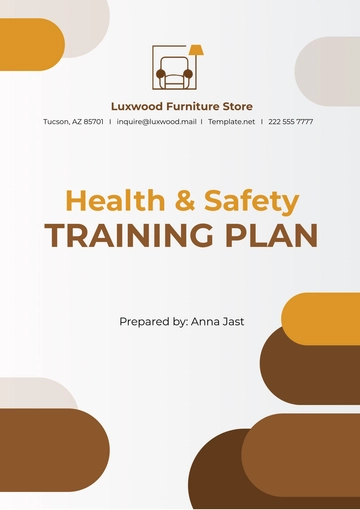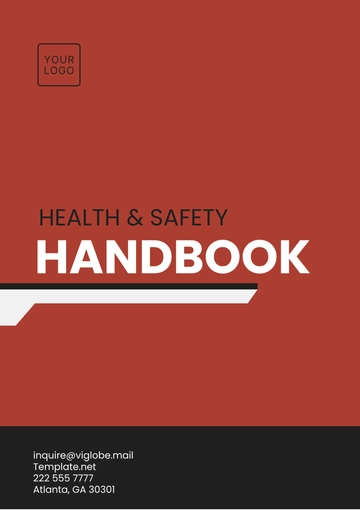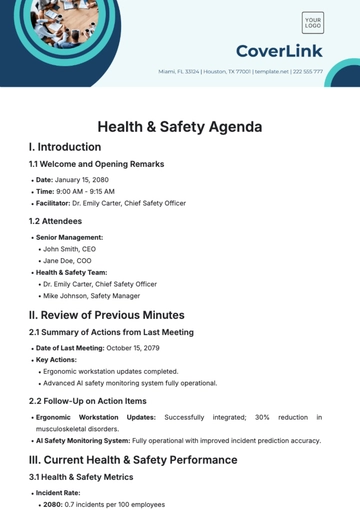Free Health & Safety Committee Rubric
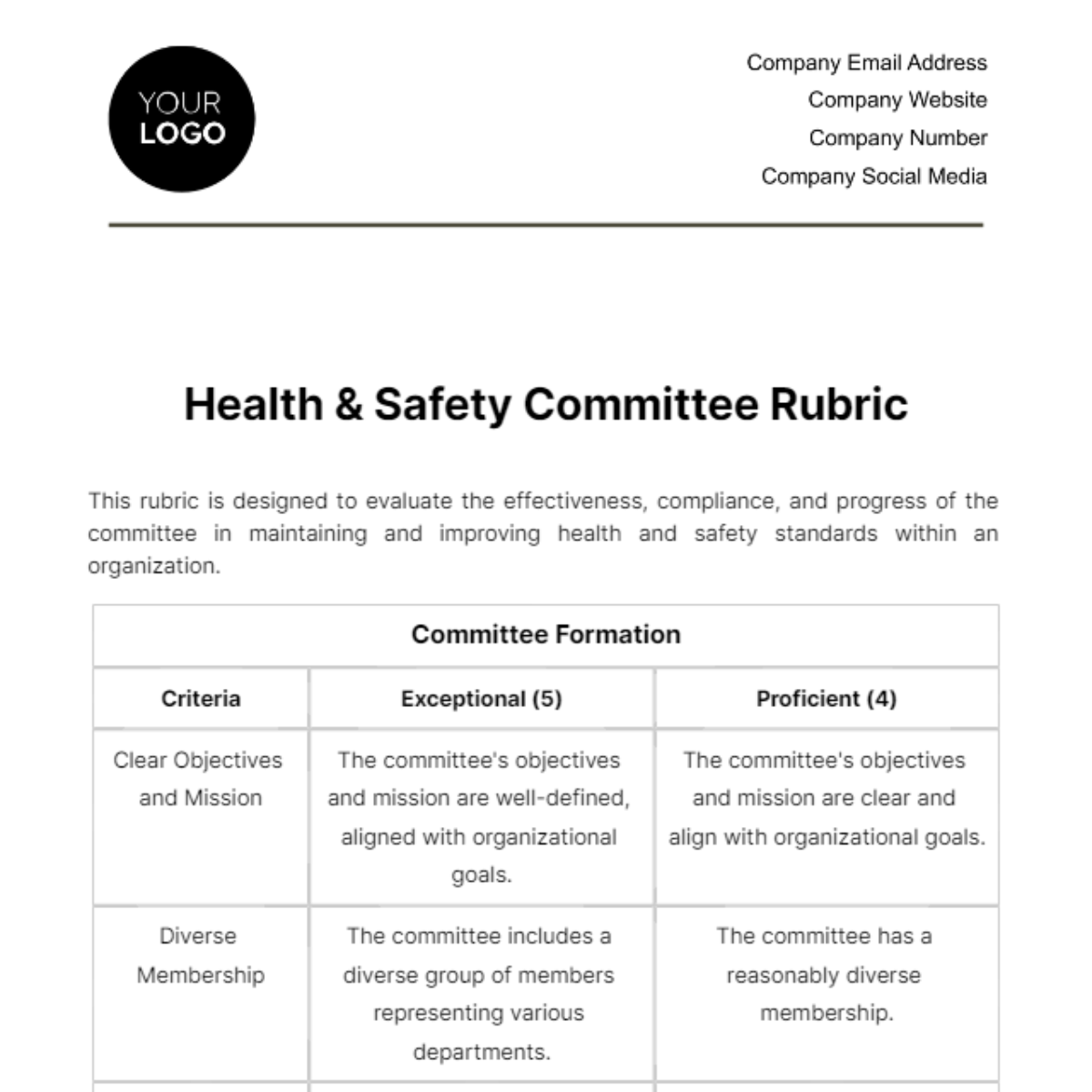
This rubric is designed to evaluate the effectiveness, compliance, and progress of the committee in maintaining and improving health and safety standards within an organization.
Committee Formation | ||
Criteria | Exceptional (5) | Proficient (4) |
Clear Objectives and Mission | The committee's objectives and mission are well-defined, aligned with organizational goals. | The committee's objectives and mission are clear and align with organizational goals. |
Diverse Membership | The committee includes a diverse group of members representing various departments. | The committee has a reasonably diverse membership. |
Leadership and Accountability | Strong leadership is evident, with clear roles and responsibilities defined. | Leadership roles and responsibilities are defined. |
Basic (3) | Needs Improvement (2) | Inadequate (1) |
The committee has objectives and mission but may not be clearly defined. | The objectives and mission of the committee are vague. | The committee lacks clear objectives and a mission. |
The committee has limited diversity in its membership. | The committee lacks diversity in its membership. | The committee is composed of individuals from a single department or group. |
Leadership roles and responsibilities are somewhat defined, and there may be occasional lapses. | Leadership roles and responsibilities are unclear or not consistently followed. | There is a lack of leadership and accountability. |
Committee Management | ||
Regular Meetings | The committee holds regular, well-structured meetings with clear agendas and minutes. | The committee holds regular meetings with agendas and minutes. |
Communication | The committee communicates effectively with the organization and safety information proactively. | The committee communicates adequately with the organization. |
Risk Assessment and Mitigation | The committee conducts thorough risk assessments, develops mitigation plans, and monitors their implementation effectively. | The committee conducts risk assessments and mitigation but may have some gaps. |
Documentation | All committee activities, decisions, and reports are well-documented and easily accessible. | Most committee activities and decisions are documented, and records are generally accessible. |
Meetings are irregular or may lack clear agendas and minutes. | Meetings are infrequent, poorly structured, or lack documentation. | The committee rarely meets, and when it does, meetings are disorganized. |
Communication is limited, and important information may not always be shared promptly. | Communication is sporadic, inconsistent, or ineffective. | The committee fails to communicate with the organization effectively. |
Risk assessments and mitigation efforts are limited or may not be consistently implemented. | Risk assessments are superficial, and mitigation efforts are rarely carried out. | The committee neglects risk assessment and mitigation efforts. |
Documentation is incomplete or may be challenging to access. | Documentation is minimal, inconsistent, or disorganized. | There is a lack of documentation for committee activities. |
Effectiveness and Impact | ||
Achieving Objectives | The committee consistently meets or exceeds its objectives, contributing significantly to workplace safety. | The committee generally achieves its objectives. |
Employee Engagement | The committee actively engages employees in safety initiatives and seeks their input and feedback. | The committee encourages employee engagement but may not be effective. |
Continuous Improvement | The committee consistently identifies areas for improvement and implements changes. | The committee identifies areas for improvement but may not always implement changes effectively. |
The committee occasionally meets objectives, but impact is limited. | The committee rarely meets objectives, with minimal impact on workplace safety and health. | The committee consistently fails to meet objectives, with no discernible impact. |
Employee engagement efforts are limited, and there may be resistance from employees. | The committee struggles to engage employees, and there is significant resistance. | Employee engagement is virtually non-existent. |
The committee occasionally identifies areas for improvement. | The committee rarely identifies areas for improvement. | The committee does not engage in continuous improvement efforts. |
- 100% Customizable, free editor
- Access 1 Million+ Templates, photo’s & graphics
- Download or share as a template
- Click and replace photos, graphics, text, backgrounds
- Resize, crop, AI write & more
- Access advanced editor
Elevate your safety standards with Template.net's Health & Safety Committee Rubric Template. This editable and customizable tool empowers you to assess and improve safety measures efficiently. Tailor-made for your specific needs, it's editable in our Ai Editor Tool, ensuring seamless adaptation. Upgrade your safety protocols with precision and ease.







